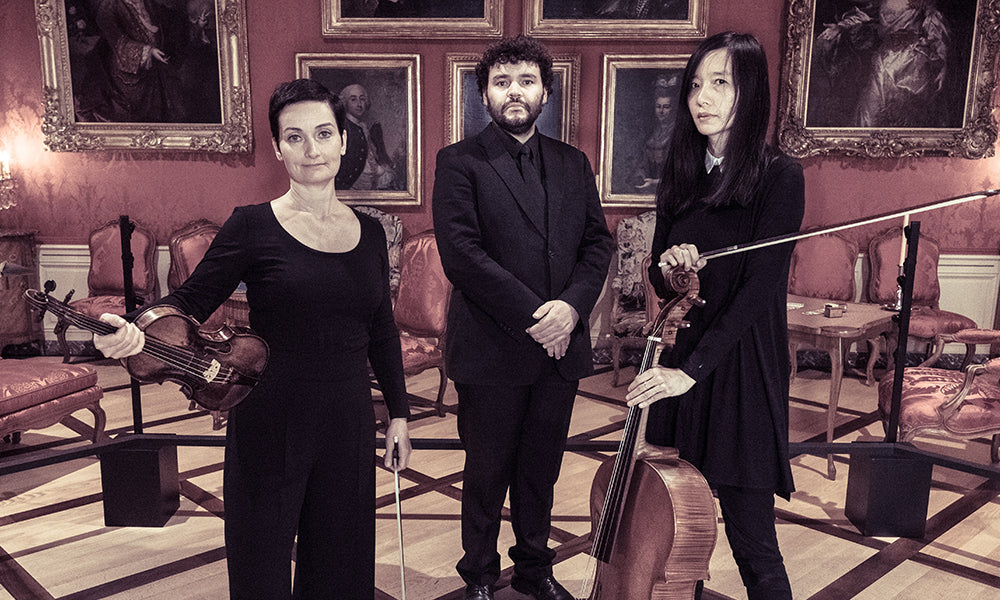
Music Web International: Nicolas Capron, Premier Livre de Sonates à Violon seul et basse
The disc under review here is the first in a planned series of recordings of music by "musicians of Europe hosted by the Baron of Prangins", as the rear announces. Who was this figure who apparently attracted various composers?
Louis-François Guiguer, Baron of Prangins – today a municipality in the Swiss canton of Vaud, on Lake Geneva – was born in 1741 in Paris. From 1753 on he studied at the Collège de Genève. When his father died in 1770, he inherited the Barony of Prangins. From 1771 until his death he kept a diary, which gives much information about his life and activities. I assume that the information about his associations with musicians and composers is also taken from this diary, but the liner-notes do not mention this explicitly.
One of those composers was Nicolas Capron, educated on the violin by Pierre Gaviniès, who himself was under the influence of Jean-Marie Leclair. During the famous Querelle des Bouffons, Capron was a member of the orchestra of the Opéra Comique. On 1 November 1761 he gave his début at the Concert Spirituel. The next year he became the leader of the second violins, and in 1765 replaced his former teacher Gaviniès as head of the first violins. Until his death he also performed about 100 times as a soloist. At the same time he was associated with various ensembles, for instance the orchestra of Le Riche de La Pouplinière, for many years the patron of Jean-Philippe Rameau. Capron was known as a real virtuoso; the paper Mercure praised him for "the quality of his sound, his accuracy, his skill and the boldness of his bowing technique" (booklet). However, as Neal Zaslaw mentions in New Grove, his style of playing was not unanimously applauded; some criticized Capron for his "diabolical love of difficulties".
It is safe to assume that the set of six sonatas, published as his Op. 1 in 1768, gives a good impression of his skills. Among their features are frequent double stopping and in particular the exploration of the highest register of the violin. Notable are the dynamic markings in several of the sonatas, such as rinforzando in Sonata I and crescendo in Sonata IV. In Sonata VI Capron explores the range of the violin through a scale spanning more than three octaves. Sonata III opens with unsettling harmonies which then dominate the entire first movement.
All the sonatas are in three movements: fast-slow-fast. Sonatas I and III end with a Pastorale, although one would not immediately recognize those movements as such. The one in Sonata I is in binary form, comprising two arias. The same goes for the pastorale which closes Sonata III, but here the second section turns to the major. Sonata V ends with a tempo di minuetto, and Sonata VI with a set of variations. As is so often the case with collections of violin sonatas, the last is the most virtuosic piece.
One may ask: what do these sonatas have to do with the Baron of Prangins? Well, probably nothing at all. The reason that these sonatas are recorded as part of this series is that it is documented that Capron did play in Prangins in April 1779, as Guiguer notated in his diary. The set itself was dedicated to someone else, the Count of Lauraguais. It seems certainly possible that Capron played some of these sonatas for the Baron. It is the only extant collection of solo sonatas from his pen. Whether he has written more is not known. In the field of instrumental music he published only three further collections: two sets of string quartets and six duos for two violins; the latter have been lost.
The booklet does not say so, but I am pretty sure that this is a world premiere recording of Capron's sonatas. Every lover of 18th-century violin music should be happy about that, because this is brilliant stuff. Those who have an intimate knowledge of the violin or play it themselves, will be interested in the technical aspects. Ann Roux delivers immaculate performances and deals impressively with the challenges these sonatas represent. However, these sonatas are more than demonstrations of technical prowess. Capron has written very fine music, which deserves repeated listening. There is also quite some expression, for instance in the slow movements. That comes off equally well here. Marieanne Lee and Lionel Desmeules are responsible for the excellent support in the basso continuo.
Article's source: Music Web International, by Johan van Veen, June 2018
Online
iTunes
Spotify
Amazon
Google
Qobuz
Related collections
Ancient music
Cello
Chamber
Harpsichord
High-resolution audio - Studio master quality
In stock
New releases
Nicolas Capron
Rarities
Sound engineer - Jean-Claude Gaberel
Violin
More links
More articles about this release
Lionel Desmeules
Ann Roux
Others Ancient Music albums


Commentaires
0 Commentaires